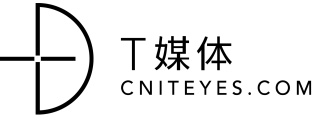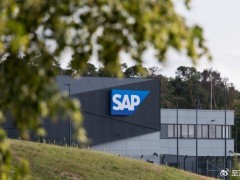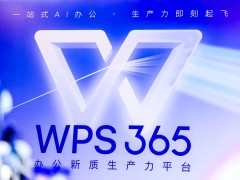原作者:Clement Vouillon
编译:T客汇 李哲
核心提示:日志系统(SOR)的变革对第三方应用市场产生了哪些影响?
关于本系列文章
在 B2B 软件系统中,日志系统(SOR)一直有着举足轻重的地位,当前 B2B 软件环境变迁迅速,因此我们希望用一系列文章对其进行具体分析。这个系列将包含三部分:
第一篇文
原作者:Clement Vouillon
编译:T客汇 李哲
核心提示:日志系统(SOR)的变革对第三方应用市场产生了哪些影响?
 关于本系列文章
关于本系列文章
在 B2B 软件系统中,日志系统(SOR)一直有着举足轻重的地位,当前 B2B 软件环境变迁迅速,因此我们希望用一系列文章对其进行具体分析。这个系列将包含三部分:
- 第一篇文章的重点是探索 SOR 的定义和变革的原因,并分析其在当前环境下面临的挑战。
- 第二篇文章将关注这些变化对 SaaS 初创公司的影响。
- 最后一篇文章将对未来几年的发展进行探索。
第三次浪潮的赢家
前一篇文章介绍了两大宏观趋势——日志系统(SOR)的大众化和类型化,它们塑造着B2B软件市场的图景。结果是,越来越多专门化的SOR服务于越来越多的客户(特别是中小企业)。
如同大多数的科技革命,这第三次浪潮也要经过一定的过程:从浪潮的先驱,经过市场教育、赢家的出现,一直到最后被社会广泛的接受。
对于SOR来说,第一次浪潮是水平化的本地部署的ERP系统,微软、SAP、Oracle Sage等是这次浪潮的赢家。第二次浪潮是SaaS的SOR,SalesForce、Workdays、New Relic等是这次浪潮的赢家。如今,我们可能正处在第三次浪潮——细分化SOR的中间阶段,本次浪潮的一些赢家(Slack、Segment、Gusto、Docusign、GitHub、Intercom等等)也已经出现。当前的软件行业图景越来越像一个相互连接的平台和第三方应用的生态系统网络。
而且,它对下文我们要分析的工作流应用产生了巨大影响。
对工作流应用的影响有哪些?
在此提醒:“我们可以简单地将软件世界划分为日志系统(SOR)和工作流应用(Workflow Application, WA)。日志系统是特定部门或公司的单一可信来源。如,CRM 系统是公司销售信息的权威来源,ERP 系统则是公司财务信息的权威来源。日志系统的价值在于其为公司管理团队生成报告和提供洞察力的能力,而工作流应用能够使员工更好的开展工作。”——来自红点创投Tomasz Tunguz。
随着软件平台的不断增加,工作流应用如何更好地适应这一环境也就变得越来越重要。
文章的剩余部分将围绕创始人需要回答的以下三个实际问题展开:
- 我的应用为什么要与SOR集成?
- 应该怎样构建集成?
- 它能否成为一个获客渠道?
一、为什么要与SOR集成?
我们需要分清两种类型的工作流应用:
- 作为SOR的延伸和扩展的工作流应用
- 独立的工作流应用(它们可以不依附任何SOR而存在)
作为SOR的延伸和扩展
随着越来越多的SOR向平台过渡,在这些平台上建立起来的SaaS产品的数量也在不断增加,它们提供额外的功能或者特定功能的增强服务。这些产品天生需要与一个或多个SOR集成。
ChartMogul就是这类软件的典型代表。ChartMogul是一家为基于订阅模式的企业提供服务的SaaS公司,需要与企业客户的支付系统(Stripe, Braintree, Chargify, Paypal等)相连接,以分析它们的账单数据,帮助它们更好地了解业务。ChartMogul基本上就是在这些支付SOR上,建立起了一个额外层。
与SOR深度集成的第二种类型的产品属于垂直化的扩展。
当一个SOR的体量足够巨大的时候,它实际上就成为了它这个软件类别的平台。比如说SalesForce,以SalesForce的体量,它已经不再需要为五花八门的利基市场(niches)和行业开发特定版本的产品。
相反,它们会让第三方应用做这个工作。例如,Veeva就是一家完全在SalesForce上建立起来的,做制药和生命科学行业的CRM起步的十亿美元级别的公司。
对现成的SOR进行垂直化拓展,是一种切实可行的商业战略。
独立的工作流应用
对于独立的工作流应用,情况就有些复杂了。当出现以下几种常见情况时,可以与SOR进行集成:
- 你的大多数客户都在应用某个SOR,而你的竞争对手大多数也已经和它进行了集成。
在这种情况下,你应该果断地与这个SOR进行集成。例如说,你为企业部门开发了销售软件,那么很可能你需要尽快与SalesForce进行集成。
许多工作流应用需要原始数据才能正常运行。这种情况下,一种有效的策略是直接从现有的SOR上获取数据。
例如,如果你开发了一款案源计分( lead scoring)产品,那么你应该和Segment集成以获取客户的现存数据,而不是让你的客户手动导入数据,或者等待你的产品累积足够多的数据。
- 你的工作流应用产生的额外数据可以添加到现有的业务记录上。
这可能是工作流应用和SOR之间最常见的连接方法:数据同步。
如果你的工作流应用可以产生新数据或者修改现存的业务记录,那么你应该进行数据的自动同步。你或许可以通过第三方API平台(比如Zapier))这一非常简便的方式实现这一目的。
二、应该怎样构建集成?
我和那些已经创建集成的创始人们经常讨论到的话题是,他们之前都低估了创建和维护集成所需要付出的资源。
需要考虑的第一个方面就是平台的API成熟度。一些平台如SalesForce,拥有非常成熟的开发人员支持系统。如果你的产品想要在SalesForce AppExchange上出现,需要花费几千美元进行应用审计(安全性和可用性)。规模小一些的SOR没有如此高级别的管控。
所以我经常听到的一个建议是花一些时间做尽职调查(也就是询问其他的开发人员),以便于了解SOR的API质量、文件材料的质量、使用条款、以及提供的支持的质量(许多平台并不为它们的第三方应用提供真正的支持)。
需要考虑的第二个方面就是如何构建集成,有以下三个选择:
- 在内部构建集成
- 交给IT咨询公司/平台合作伙伴构建集成
- 选用一个中间层的API平台
如果你的集成对于产品至关重要,或与SOR的集成程度很深,那么在内部构建集成绝对是你的最优选择。但是,一定要做好投入大量开发时间的准备。
将你的集成工作外包出去也是一种选择。一些IT公司专门从事这些工作,甚至一些平台如SalesForce有对开发合作伙伴的认证。这些公司的优势是它们的知识以及与各种平台的关系,但价格会很比较昂贵。所以相对于初创公司,这种方法更适用于大型企业。
最后,一种折衷的方法是选择一些提供API连接器的公司如Zapier、elastic.io 等等。作为你的产品和主要SOR平台之间的中间层,这些产品可以满足基本的使用情况。
三、如何成为一个获客渠道
和SOR集成不仅仅是为了提高现有客户的满意度,还是为了获取新客户。在某些情况下,这些平台可以成为获客渠道。
当我询问SaaS公司创始人,这些平台是否为他们带来新客户的时候,绝大多数人的回答是肯定的。成为获客渠道的方式有以下几种:
以上许多SOR都会为它们的客户提供一些第三方应用目录:SalesForce AppExchange, Xero add-ons marketplace, Intuit marketplace, Workday marketplace, Zuora appstore,Gusto appstore, Slack app directory, GitHub app directory, Zendesk app marketplace, Hubspot marketplace, Marketo marketplace, Docusign appstore, Segment catalog, Stripe listing等等。
这些应用目录的等级也是多种多样。一些成熟的应用市场如SalesForce可以显示用户评论和用户使用情况,另外一些应用商店如Xero很简单但很实用,甚至还有一些如Stripe只提供最基本的应用列表。
当然,一个成熟的应用市场更容易带来新客户。但也有一些创始人告诉我,一些小规模的应用市场如Zapier或Segment.com也为他们带来了数量可观的新客户。
如果你的产品可以带来真正的附加价值,而且你与SOR平台保持着良好的合作关系,那么平台的客户成功和支持团队可能会将你的应用推荐给它们的客户。
上述的一些平台也会通过写博客文章、客户认证以及发送营销简讯来推广第三方应用,这些也会为你带来新的客户线索。
有一些创始人反应,软件中间商会搜索上述应用市场,有时会联系他们帮助分销产品。
你可能会问,以上这些获客渠道究竟可以产生多大的价值?答案可能会令你失望,因为我也不能够提供确切的数字。但是通过与创始人的谈话,我收获到了以下内容:
- 显然,一些公司在SalesForce APPExchange上做得很好,产生了数十万美元的价值。而在其他应用市场上产生的价值相对较小。
- 对于我采访到的大多数创始人来说,应用市场只是额外的而不是主要的获客渠道。
- 大多数创始人收获的月经常性收益(MRR)在几千到几万美元之间。
英文原文:
The emergence of the third generation winners
In the previous post we saw that two macro trends — the democratization and unbundling of system of records — were shaping the B2B software landscape. The consequence is an increasing number of specialized SOR for an increasing number of customers (especially SMBs and SMEs).
Like most tech evolutions this third wave goes through the cycle: precurSOR, market education, emergence of winners and widespread adoption.
For SOR the first wave was about horizontal on-premise ERPs with Microsoft, SAP, Oracle Sage… being the winners, the second wave was about the first SaaS SOR with SalesForce, Workdays, New Relic… being the winners and we’re maybe in the middle of the third wave, specialized SOR, with the emergence of the first winners (Slack, Segment, Gusto, Docusign, Github, Intercom…) of this generation.
The current software landscape increasingly looks like a network of interconnected platforms and third party app ecosystems:
And it has major implications for workflow apps which we’ll analyse in the rest of the post.
What are the consequences for workflow applications?
As reminder:
“A simple way of dividing the software world is system of record vs workflow application. Systems of record are the single source of truth about a particular department or company. Systems of record are valued for their ability to generate reports and insight to the company’s management team […] On the other hand, workflow applications enable workers to do work.“ From Tomasz Tunguz.
Since more and more software platforms are emerging, it becomes increasingly important for workflow applications to adapt well to this environment.
To discuss the many consequences that this changing landscape involves, the rest of the post is structured around three practical questions that a founder could ask himself today:
- Why should I connect my application to a SOR?
- How should I build the integration ?
- Can it become a customer acquisition channel?
- Why should I connect my SaaS to a SOR?
We need to distinguish two types of workflow applications:
- Workflow applications which are SORadd-ons / extensions.
- Workflow applications which are stand-alone apps (they can exist without any SOR).
SOR add-ons and extensions
As more SOR are transitioning to platforms there’s also an increasing number of SaaS products that are built on top of them and which approach is to offer extra features / specific enhancements. These products inherently need to be connected to one or more SOR.
ChartMogul is a great example of such software. ChartMogul is a SaaS, for subscription based companies, that connects to their payment system (Stripe, Braintree, Chargify, Paypal etc…) to analyze their billing data and help them understand their business better. They basically built an extra layer on top of these payment SOR.
The second type of products which is tightly linked to SOR are “vertical” add-ons.
Once a SOR grows big enough it can become the de facto platform of its software category. Ex: SalesForce. At this scale the SOR operator doesn’t bother building specific versions of its product for the myriad of niches and industries that might need it.
Instead they let third party apps do that job. For instance Veeva is a Billion dollar company that started as a CRM for the pharmaceutical and life sciences industry purely built on top of SalesForce.
“Verticalizing” an existing SOR is a real viable business strategy.
Stand-alone workflow applications
In the case of stand-alone workflow applications the answer to the question is a bit more nuanced. Here are some common situations for which it makes sense to integrate with a SOR.
The majority of your customers is working with a SOR and the majority of your competitors is already integrated with it.
Then you should definitely offer an integration too. For example if you develop a sales software for the enterprise segment chances are high that you need to offer a SalesForce integration ASAP.
Your workflow application needs initial data in order to work properly.
Many workflow applications need initial data before they can work properly. A good strategy to avoid the “empty product” effect is to fetch that data directly on existing SOR.
For example if you develop a lead scoring product, instead of asking your users to import data manually or to wait that your product fetches itself enough information, you can create an integration with Segment that will access the customer’s existing data.
Your workflow app creates additional data that can be added to existing business records.
This is probably the most common connection that exists between workflow applications and SOR: data synchronisation.
If your workflow application generates new data or modifies existing business records then it makes sense to offer automatic data sync. And if it’s not critical you can probably do it through a third party API platform (Zapier…) which are very convenient for this purpose.
How should I build the integration ?
A common theme that comes back when I discuss with founders who have built such integrations is how they underestimated the resources required to build and maintain one.
A first aspect to take into consideration is the platform’s API maturity. Some platforms like SalesForce are extremely mature with real developer support. For instance to appear on SalesForce AppExchange you need to pay a fee of several thousands dollars and to go through an app audit (security and usability) before you are accepted. Smaller SOR don’t have this level of control.
As a consequence a common advice that I hear is to spend some time doing due diligence (a.k.a ask other developers) to learn more about the quality of the SOR’s API, the quality of the documentation, the terms of use and also the quality of the support offered (many platforms don’t offer real support to their third party apps).
The second important aspect to take into consideration is how you choose to build your integration. Three options are offered to you:
- Build the integration in house.
- Entrust your integration to an IT consulting firm / platform partner that will build it for you.
- Use an intermediary API platform.
The in-house option is definitely the way to go if your integration is critical to your product or goes deep into the SOR. But be ready to allocate plenty of developers’ time to it.
Outsourcing the development of your integration is also possible. Some IT firms are specialised in it and some platforms, like SalesForce, even havecertifications for development partners . The advantage of these firms is the knowledge and the relations they have with the platforms but they are costly and better suited at big companies than young startups.
Finally, a good compromise between the two options mentioned above is to use API connectors like Zapier, elastic.io etc… These products act as intermediaries between you and major SOR and are very interesting for basic use cases.
How can it be a customer acquisition channel?
One of the major reason to integrate with a SOR is not only to please existing users but also to acquire new ones. In some cases these platforms can be interesting acquisition channels.
When I ask SaaS founders whether these platforms bring them new customers the vast majority answers yes, mainly through:
Platform Marketplaces
Many of the SOR listed above provide a catalog of third party apps available for their customers: SalesForce AppExchange, Xero add-ons marketplace, Intuit marketplace, Workday marketplace, Zuora appstore,Gusto appstore, Slack app directory, GitHub app directory, Zendesk app marketplace, Hubspot marketplace, Marketo marketplace, Docusign appstore, Segment catalog, Stripe listing etc…
All of them are not equal, far from, and it ranges from sophisticated marketplaces powered by algorithm fueled with user reviews and usage (SalesForce) to simpler but real appstores (Xero) or even minimalist bullet point listings (Stripe).
Obviously the more mature and sophisticated an add-ons marketplace is, the more it has the potential to bring new customers. The best one, by far, is SalesForce which is known as a very valuable distribution channel if you manage to rank high (and that’s not easy).
But some founders told me that they managed to get a decent amount of new customers through smaller marketplaces such as Zapier or segment.com.
SOR Customer Success Team
If your product brings real added value and if you manage to build a good relationship with the platform, it’s possible that the customer success or support team suggests your app to their customers.
Content Marketing
Some of the platforms cited above also write blog posts, customer testimonials and send marketing newsletters that promotes third party apps, which can bring new leads.
Software resellers
Another interesting aspect that I discovered while speaking to founders of third party apps is that software resellers are scouting these marketplaces and sometimes contact them to distribute their product (and obviously ask for a fee, based on performance, classic affiliation).
Now you’re probably asking yourself how much $ these channels can generate. Well I’ll probably disappoint you because I cannot provide clear numbers but while discussing from founders I could learn that:
- Clearly some companies are doing really well on SalesForce AppExchange and you can do hundreds of thousands of dollars there. The other software platforms are all smaller than this one.
- For the majority of founders I’ve interviewed the marketplaces were nice additional customer acquisition channels and not their main one.
- The majority told me than they could generate from a couple of thousands to several tens of thousands $ of MRR.
 关于本系列文章
在 B2B 软件系统中,日志系统(SOR)一直有着举足轻重的地位,当前 B2B 软件环境变迁迅速,因此我们希望用一系列文章对其进行具体分析。这个系列将包含三部分:
关于本系列文章
在 B2B 软件系统中,日志系统(SOR)一直有着举足轻重的地位,当前 B2B 软件环境变迁迅速,因此我们希望用一系列文章对其进行具体分析。这个系列将包含三部分:







